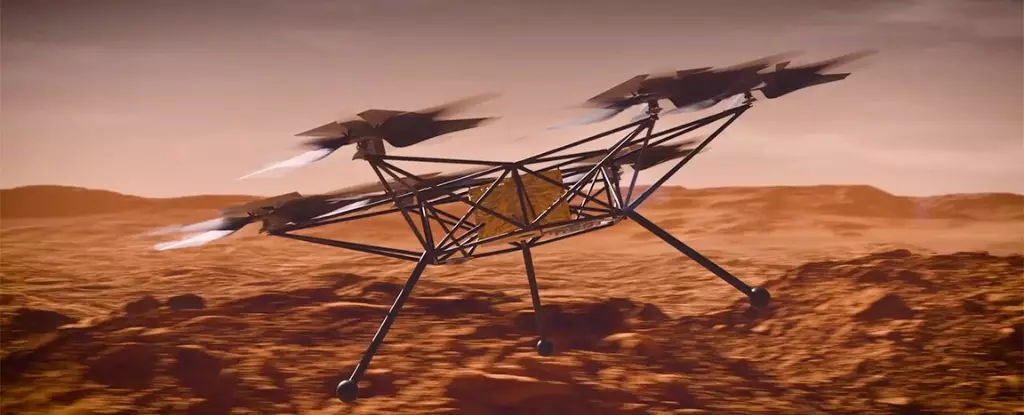In April 2021, NASA made history with the successful flight of Ingenuity, a small helicopter that became the first powered aircraft to achieve flight on another planet—Mars. Launched aboard the Perseverance rover in 2020, Ingenuity’s primary purpose was to serve as a technology demonstration, proving that controlled flight could be accomplished in the thin Martian atmosphere. The atmosphere of Mars presents a hostile environment for aviation, with a density of less than 1% that of Earth’s. Despite these challenges, Ingenuity completed its inaugural flight by hovering at a height of ten feet before safely returning to the Martian surface.
This remarkable feat opened new avenues for exploration, enabling scientists to scout and survey various regions of interest on the planet. With a total of 60 flights under its belt, Ingenuity has not only validated the feasibility of aerial reconnaissance on Mars but has also provided valuable insights into the landscape, highlighting the potential for future missions.
Operating a drone in Mars’ atmosphere is fraught with difficulties that stem from its extraordinarily low density. To generate sufficient lift, aerial vehicles require more robust rotor designs and advanced engineering techniques than their Earth-based counterparts. Ingenuity was ingeniously crafted to meet these requirements; however, it also had to contend with unique hazards. The fine dust that coats the Martian surface poses a significant risk, as it can easily be lifted into the environment and compromise the delicate machinery of flying craft.
Consequently, future aerial vehicles must incorporate sophisticated design elements that not only enable efficient flight but also safeguard against the planet’s local hazards. This necessity has led to the development of NASA’s next-generation aerial vehicle, aptly named the Mars Chopper.
Introducing the Mars Chopper
NASA has recently unveiled striking computer renderings of the Mars Chopper—a drone designed to enhance aerial exploration capabilities on Mars and potentially other celestial bodies. Unlike Ingenuity, which served primarily as a proof of concept, the Mars Chopper is intended to fulfill a more extensive range of scientific tasks. One of its most significant advancements is its increased payload capacity, allowing it to carry scientific instruments for imaging and analysis.
This larger drone, approximately the size of an SUV, features six rotors, each equipped with six blades. These rotors are designed to provide enhanced lift, enabling the vehicle to transport scientific equipment weighing up to five kilograms over distances of up to three kilometers. The collaborative effort orchestrated by NASA’s Jet Propulsion Laboratory and Ames Research Center showcases an ambitious stride toward more sophisticated exploration methods.
Implications for Future Exploration
The introduction of the Mars Chopper could have profound implications for how we approach planetary exploration. With the ability to carry advanced scientific instruments, it stands poised to undertake significant tasks including detailed terrain mapping and in-depth analysis of Martian geology. By effectively supporting ground-based exploration initiatives, the Mars Chopper can scout locations that may not be easily accessible to rovers.
Moreover, the technology developed for this vehicle bodes well for future human exploration missions. As astronauts prepare for further missions to Mars and even beyond, aerial reconnaissance will vastly augment their understanding of the environment, facilitating safer and more effective explorations. The Mars Chopper embodies a paradigm shift in how we conceptualize space exploration, promising a future where powered flight on alien worlds enhances our capacity for scientific discovery.
The advancements represented by the Mars Chopper signal an exciting new era in extraterrestrial exploration. Building on the pioneering work of Ingenuity, this next-generation drone promises to significantly enhance our ability to navigate and analyze the mysterious landscapes of Mars and possibly other planets. As we stand on the cusp of this new frontier, it is evident that aerial vehicles will play a crucial role in expanding our understanding of the cosmos, ushering in possibilities that were once confined to science fiction. Through innovative engineering and ambitious vision, NASA continues to lead the charge into the unknown, driven by humanity’s insatiable curiosity to explore and uncover the secrets of the universe.

